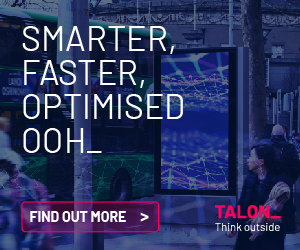 Stephen Foskin looks at the changes in how content is consumed online and the challenges this presents for advertisers.
Stephen Foskin looks at the changes in how content is consumed online and the challenges this presents for advertisers.
There has been considerable evolution in the ability of publishers and advertisers to understand audiences and engage with them in recent years. This has been fuelled by the rapid expansion in data gathered on users and their journeys – essentially the return of investment in data gathering infrastructure. While campaign success in the past was measured through impressions, clicks and sometimes conversions – innovation in new modes of post-campaign analysis will reveal who your brand or content was viewed by in greater detail.
Modern analytics services allow for elaborate forms of data segmentation, where it is possible to see much more granular detail combining the when, where, who, and how – to build a complete picture of customer behaviour. With that data in turn RTÉ can deliver more relevant advertising and more importantly for the consumer more relevant content delivered and even greater ROI for advertisers.
What We Can See
RTÉ’s web analytics platform, Comscore, measures many points of interest about users. For instance, there are considerable differences in user traffic depending on the delivery mechanism – traditional desktop website versus Apps.
The RTÉ News Now App user traffic spikes between 7 – 9am, with another lift between 10 and 11pm, indicating people getting their fix of news once they wake up, are on their daily commute by public transport and winding down for the day.
The RTÉ.ie website user traffic spikes in activity at lunchtime as people browse the news during their lunch-hour.
Some 50% of total RTÉ Player traffic is between the hours of 6pm to midnight. These users browse on a wide variety of devices, including smartphones, tablets, notebooks, smart TV’s and UPC.
RTÉ also engages first party data derived from web and app sign-in information to understand our audience, with further information gained from panel and survey data. This combined data informs editorial and marketing decisions and aids us in delivering targeted, relevant advertising and content.
RTÉ strives for a single user overview of all journeys, regardless of devices used – the trade-off between user data and relevant content.
One of the insights we gain from this data is the difference between the demographics of our customers’ across platforms. For instance, we can see that viewing on smartphone has a younger audience than desktop or tablet.
This is corroborated by Kantar’s 2014 TGI survey, where we see stronger usage of mobile as a browsing platform in the younger demographics. Among 15 – 24 year olds the percentage that regularly use a mobile phone to access the Internet increased from just 6% in 2009 to nearly 60% in 2014. This represents a huge shift in how content is consumed. For older age groups it’s a different story, in the same period for those aged 50 and over, regular mobile smartphone Internet usage went from just 0.4% to 11%.
Tablets meanwhile are actually a slightly more preferable platform versus smartphones for those aged 50 plus with 13% of this group regularly accessing the Internet on tablet vs. 11% on smartphone in 2014.
Many forms of audience segments exist – users can be segmented by age, location, time of day, their engagement, programmes viewed amongst others.
Future Challenges
The principle challenge in understanding audience behaviour will be unifying data across an increasingly fragmented environment. Games consoles, tablets, smartphones, smart TV’s and various set-top boxes all offer alternative means of engaging with content.
According to Kantar Media, around 21% of Irish adults now have access to a smart TV. Recent RTÉ Audience Panel Research conducted in May 2015, revealed 25% penetration of smart TVs among internet users. Furthermore, Generator Research predicts the installed base of Smart TVs in the ROI will steadily increase to reach 2m by 2020. A single view of users across platforms will become a crucial area of interest for publishers and advertisers alike.
Stephen Foskin is Online Data & Business Analyst, RTE Media Sales – Digital.
Source: Comscore Digital Analytic and TGI Kantar Media 2009 – 2014.




















